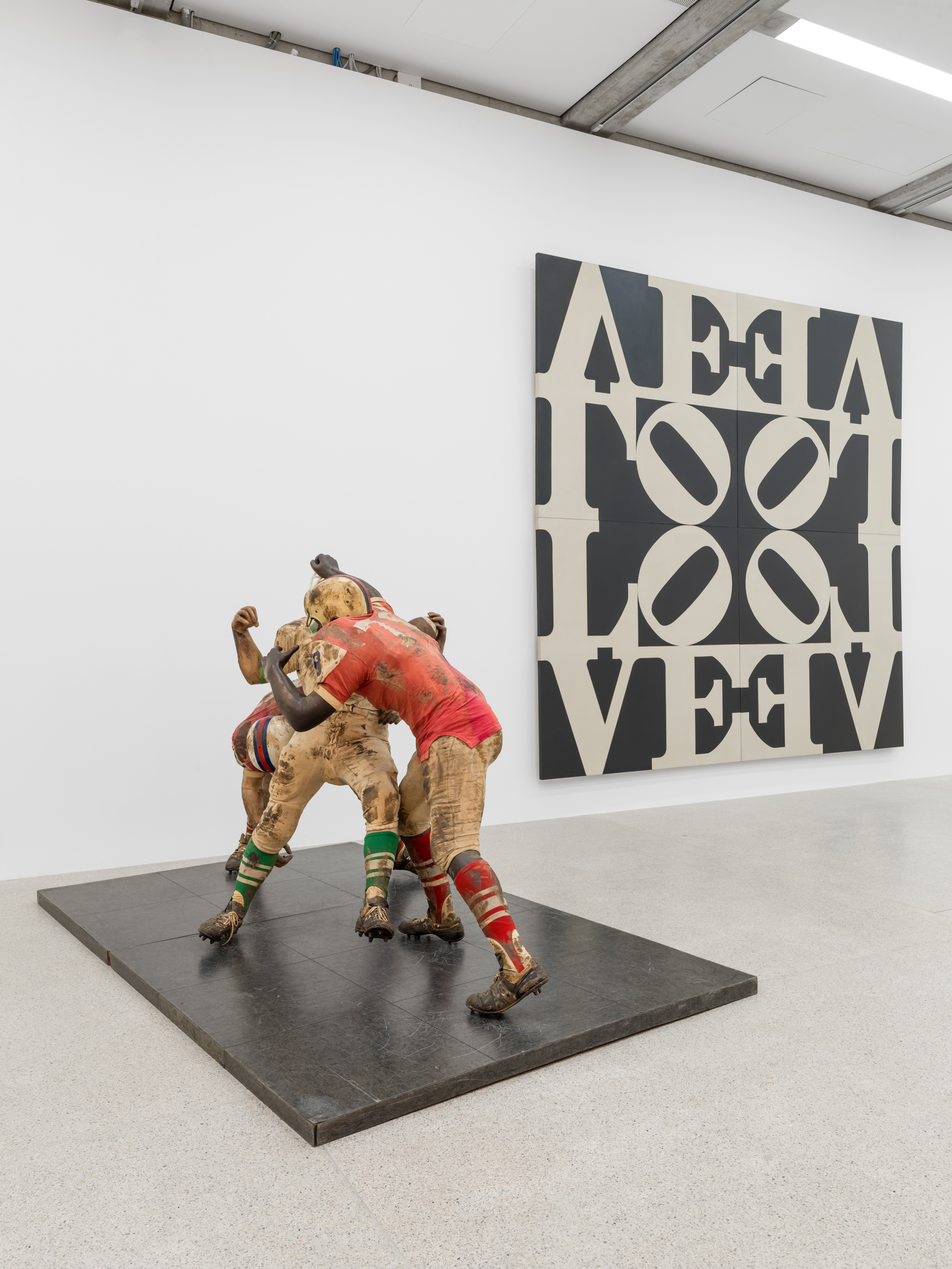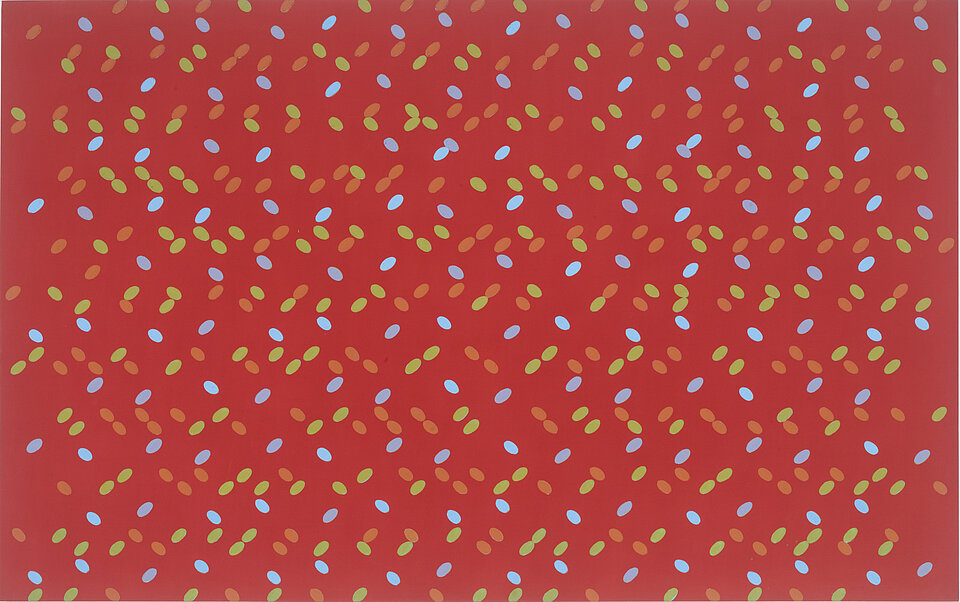After studying music at the New England Conservatory of Music in Boston from 1955 to 1957, Larry Poons turned to painting in the late nineteen-fifties. Over a career spanning five decades, Poons adopted a range of styles, creating almost sculptural wall reliefs, integrating lyrically abstract and sometimes even representational elements into his repertoire or letting the paint in a sense slip out of the picture in broad brushstrokes and pours. However, before he found his way to such unfettered engagements with painterly means, Poons initially established his reputation in the early nineteen-sixties with a series of rigorously composed canvases that oscillated between the chromatic adventures of Color Field Painting and Op Art’s shimmering retinal experiments. Despite the rather rigid construction and meticulous execution of these canvases, it seems as if we can identify a certain musicality in them, a form of syncopation or strikingly rhythmical structuring.
Nixe’s Mate from 1961 features an ingenious sequence of oval dots in blue and green, almost reminiscent of a punch card system or motion notation. Set against a uniformly bright red background, the dots run diagonally across the canvas, which is over two and a half meters wide and occupies the viewer’s entire field of vision. The slightly chaotic-looking yet regularly structured pattern is underlaid with a second sequence of more inconspicuous dots, oriented in the opposite direction, echoing the dot motif in terms of their form but with a reddish tint that picks up on the background’s coloring. Illusionistic yet abstract depth is created using the simplest of means. In 1965, Nixe’s Mate was shown at the Museum of Modern Art, New York, in The Responsive Eye exhibition that was central to Op Art’s breakthrough.

